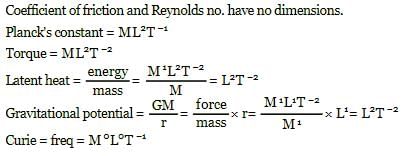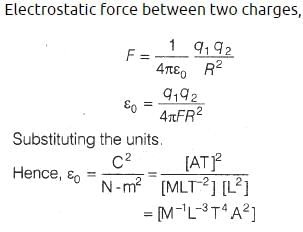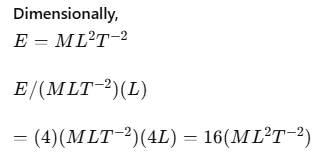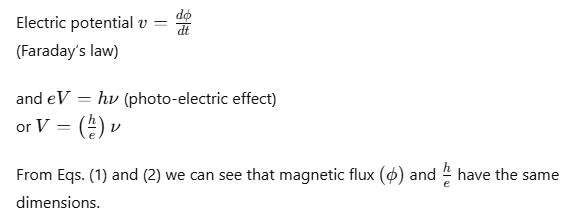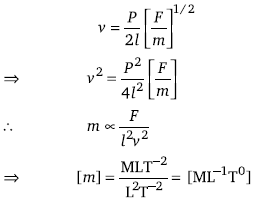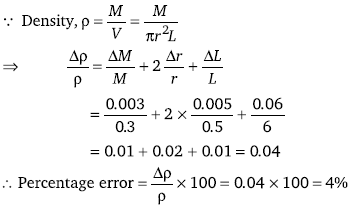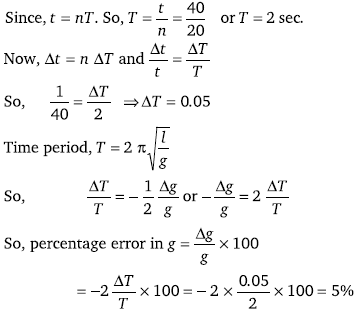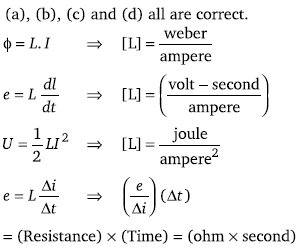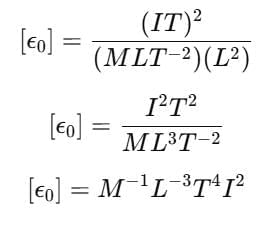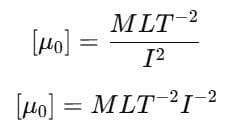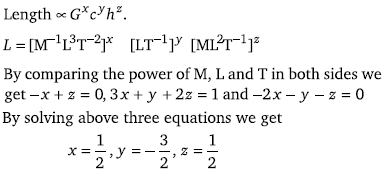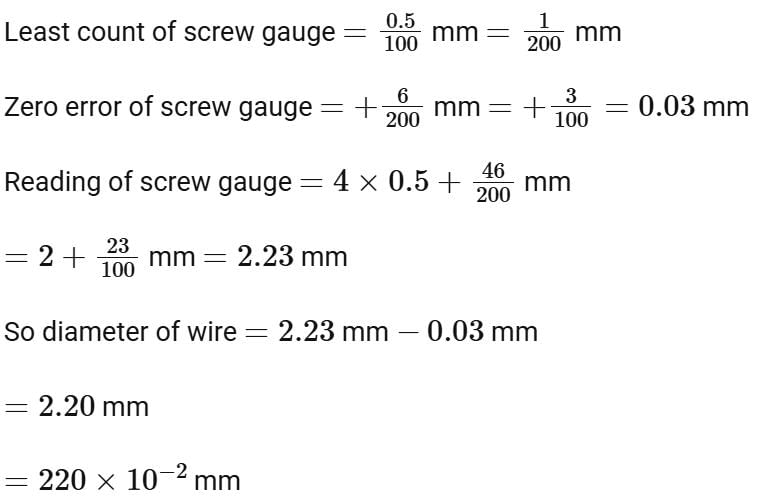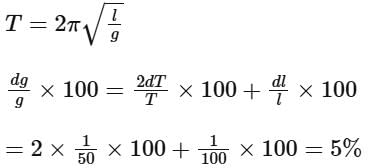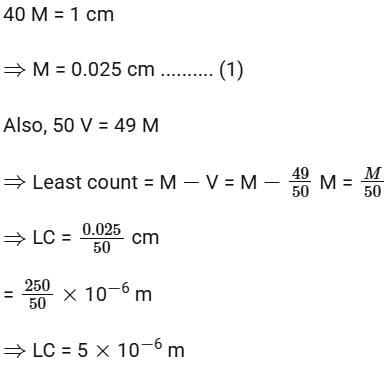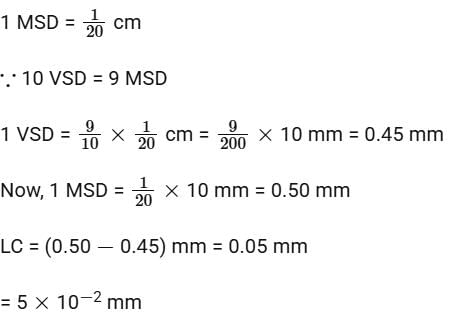Test: Units & Measurement - 1 - NEET MCQ
25 Questions MCQ Test - Test: Units & Measurement - 1
The pairs of physical quantities that do not have the same dimensions:
a) Reynold's number and coefficient of friction
b) Latent heat and gravitational potential
c) Curie and frequency of light wave
d) Planck constant and torque
b) Latent heat and gravitational potential
c) Curie and frequency of light wave
d) Planck constant and torque
The respective number of significant figures for the numbers 23.023, 0.0003 and 2.1 × 10–3 are
Let [ε0] denote the dimensional formula of the permittivity of the vaccum, and [μ0] that of the permeability of the vacuum. If M = mass, L = length, T = time and I = electric current :
Pressure depends on distance as,  , Where α,β are constant, z is distance, K-Boltzman's constant, θ is temperature the dimension of β are :-
, Where α,β are constant, z is distance, K-Boltzman's constant, θ is temperature the dimension of β are :-
Which of the following set have different dimensions ?
If the units of length and force are increased four times, then the unit of energy will:
The dimensions of h/e (h = Planck’s constant and e = electronic charge) are the same as that of:
In a certain system of units, 1 unit of time is 5 sec, 1 unit of mass is 20 kg, and 1 unit of length is 10 m. In this system, one unit of power will correspond to:
In the relation  P is pressure, Z is the distance, k is Boltzmann'sconstant and θ is the temperature. The dimensional formula of β will be
P is pressure, Z is the distance, k is Boltzmann'sconstant and θ is the temperature. The dimensional formula of β will be
The frequency of viberation of string is given by  Here, p is the number of segments in the string and l is the length. The dimensional formula for m will be
Here, p is the number of segments in the string and l is the length. The dimensional formula for m will be
A wire has a mass 0.3 ± 0.003 g, radius 0.5 ± 0.005 mm and length 6 ± 0.06 cm. The maximum percentage error in the measurement of its density is
A student uses a simple pendulum of exactly 1m length to determined, the acceleration due to gravity. He uses a stop watch with the least count of 1 sec for this and records 40 seconds for 20 oscillations. For this observation, which of the following statement(s) is (are) true?
The SI unit of inductance, the henry can be written as
a. Weber/ampere
b. Volt-sec/amp
c. Joule/(ampere)2
d. Ohm-second
Let [ε0] denotes the dimensional formula of the permitivitty of the vaccum and [μo] that of the permeability of the vaccum. If M = mass, L = length, T = Time and I = Electric current, then

If the dimensions of length are expressed as Gxcyh2; where G, c and h are the universal gravitational constant, speed of light and Planck'sconstant respectively, then

The dimensions of the quantities in one (or more) of the following pairs are the same. Identify the pair(s)
a. Torque and work
b. Angular momentum and work
c. Energy and Young;s modulus
d. Light year and wavelength
Which of the followin combinations have the dimensions of time? L,C,R represent inductance, capacitance and resistance, respectively. Choose the incorrect option.
a) RC
b) ![]()
c) L/R
d) C/L
In a screw gauge, there are 100 divisions on the circular scale and the main scale moves by 0.5 mm on a complete rotation of the circular scale. The zero of circular scale lies 6 divisions below the line of graduation when two studs are brought in contact with each other. When a wire is placed between the studs, 4 linear scale divisions are clearly visible while 46th division the circular scale coincide with the reference line. The diameter of the wire is
In an experiment to find acceleration due to gravity (g) using simple pendulum, time period of 0.5 s is measured from time of 100 oscillation with a watch of 1 s resolution. If measured value of length is 10 cm known to 1 mm accuracy, The accuracy in the determination of g is found to be x%. The value of x is
The one division of main scale of Vernier callipers reads 1 mm and 10 divisions of Vernier scale is equal to the 9 divisions on main scale. When the two jaws of the instrument touch each other, the zero of the Vernier lies to the right of zero of the main scale and its fourth division coincides with a main scale division. When a spherical bob is tightly placed between the two jaws, the zero of the Vernier scale lies in between 4.1 cm and 4.2 cm and 6th Vernier division coincides scale division. The diameter of the bob will be
A travelling microscope is used to determine the refractive index of a glass slab. If 40 divisions are there in 1 cm on main scale and 50 Vernier scale divisions are equal to 49 main scale divisions, then least count of the travelling microscope is
In a vernier callipers, each cm on the main scale is divided into 20 equal parts. If tenth vernier scale division coincides with nineth main scale division. Then the value of vernier constant will be _________ × 10−2 mm.


